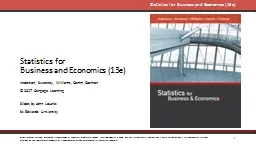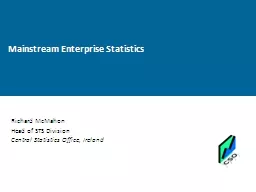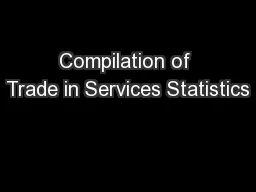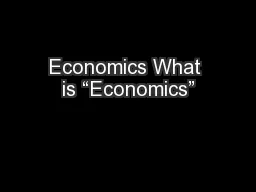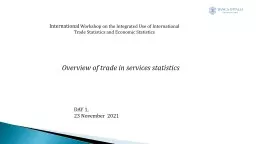PPT-1 Statistics for Business and Economics (13e)
Author : tawny-fly | Published Date : 2018-11-18
Anderson Sweeney Williams Camm Cochran 2017 Cengage Learning Slides by John Loucks St Edwards University Chapter 14 Part B Simple Linear Regression Using
Presentation Embed Code
Download Presentation
Download Presentation The PPT/PDF document "1 Statistics for Business and Economics..." is the property of its rightful owner. Permission is granted to download and print the materials on this website for personal, non-commercial use only, and to display it on your personal computer provided you do not modify the materials and that you retain all copyright notices contained in the materials. By downloading content from our website, you accept the terms of this agreement.
1 Statistics for Business and Economics (13e): Transcript
Download Rules Of Document
"1 Statistics for Business and Economics (13e)"The content belongs to its owner. You may download and print it for personal use, without modification, and keep all copyright notices. By downloading, you agree to these terms.
Related Documents

